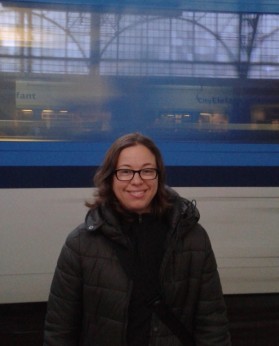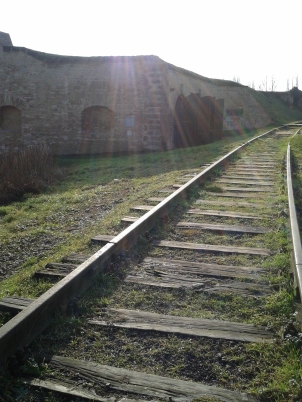 It’s pretty common knowledge that education changes lives. It opens doors, improves health, promotes gender equality, decreases poverty, promotes civic involvement and has many other benefits. This is true for basic literacy campaigns as well as sex education, access to school for girls and institutions of higher education. Yet, what is taught in addition to how it is taught matters a great deal.
It’s pretty common knowledge that education changes lives. It opens doors, improves health, promotes gender equality, decreases poverty, promotes civic involvement and has many other benefits. This is true for basic literacy campaigns as well as sex education, access to school for girls and institutions of higher education. Yet, what is taught in addition to how it is taught matters a great deal.
In a few days, I’ll begin a new semester teaching “The Jewish Experience in Central Europe” for Anglo-American University in Prague. As a scholar, a Jew and a feminist who recently moved to Prague (in the heart of Central Europe), this course hits home. It is also timely given rising anti-Semitism in Europe. Coincidentally, this is also the first time I’m teaching a course solely on Jewish history.
As part of my research and preparation, I accompanied another professor on his class’ trip to Terezín. The students first had a guided tour of the small fortress on the site. This place, while historically fascinating and meaningful to Czech history since it was built in the late 1700s by Empress Maria Theresa and housed the notorious assassin Gavrilo Princip, was a political, albeit awful, prison for dissidents and others both well before and during the Nazi occupation of Czechoslovakia. It never housed more than 500 Jews, despite some 32,000 people being imprisoned there between 1940 and 1945. While an official Czech memorial to the Shoah is on the grounds just outside the fortress, the real Jewish experience at Terezín is the ghetto, a ten-minute walk down the road.
After the tour, the students walked over to the Ghetto Museum just inside the ghetto walls. We spent about forty-five minutes there before heading back to Prague. The part of the museum we saw was well done, documenting the history of the Ghetto, especially of the children, some of whom lived in the building it occupied. Yet, this building was a small part of the entire Ghetto Museum as I was to learn on a subsequent visit.

When I got home, I kept asking myself: what was the point of the trip? What did the students learn about the Jewish experience at Terezín? We spent most of our time at the small fortress, an important historical site the history of which ties into Jewish history, but it doesn’t really capture the unique experience of the ghetto down the street.
In fact, as I was to learn on that subsequent trip, students didn’t experience the salvaged prayer room, the reconstructed dorms, the columbarium and crematorium, the memorial on the Ohre river, the railroad ties, the exhibits on film and propaganda and the rooms dedicated to Jewish art, music, theater and literature. Surely, the students learned through the experience, but I’m not convinced they learned as much as they could have given a different kind of planning for their educational experience.
In many ways, then, it’s not just education, but the kind and quality of education that matters. The way Czech history tells the story of Terezín, as evidenced by the fact that the only guided tour in all of Terezín is located at the small fortress, highlights how the country and its people were used and abused by those in power for various strategic reasons prior to World War II. Czechs suffered through their imprisonment by means of torture, disease and often execution from the time the fortress was built, through World War I, during the Nazi occupation, and later during communism.
Yet, the history of Terezín for the Jew is not the story of the small fortress. It’s not the history of the Czech people; it is the history of a people the various nationalities of Central Europe never saw as members of their society. When I take my students there, I will teach them a different history lesson.

In fact, my entire course will be a different kind of history lesson. As I’m sure my readers know, the history of Jews in Central Europe includes centuries of persecution, suspicion, regulations, uncertainty, expulsion and planned annihilation. Yet, as I’ve done my preparation, I’ve realized just how important it is not to make the history of European anti-Semitism the central theme of the course. Even if for so many rightful and even prudent reasons, it could be.
Instead, my students will hopefully finish the course with an understanding of the ways in which Jewish women and men flourished as well as contributed to society, in spite of and (often) in the face of constant persecution. Of course, they will learn the history and horror that is anti-Semitism. Nonetheless, I want to stress with my students: that in the stifling space of the medieval ghetto, Jewish women and men creatively carved out their own flourishing, traditions that gave them life and hope; while living in the horror that was Terezín,
Jewish women and men wrote and performed operas, plays and symphonies; throughout history, Jewish women and men were important merchants, financiers, heads of companies and academics; Jewish women and men fought for civil rights and the betterment of society after the French Revolution and in Bolshevik Russia. Of course, they also need to know that Jewish society too was nowhere near perfect nor was it egalitarian by any stretch of the imagination.
Jewish women and men often replicated patriarchal structures within their own households and communities even while considered non-members and/or operating subversively within other patriarchal worlds. Yet, throughout the history of the medieval ghetto to today, Jewish women and men were active, responsible members of Central European societies in spite of the fact that they were expelled from cities and countries, denied rights and generally treated with suspicion and contempt. Perhaps this is the real experience, the counter narrative to traditional history: the Jewish people’s perseverance and flourishing in spite of it all.
To me, this is the way we need to teach this history not just of the Jews but others as well. History is not only a series of patriarchal wars, injustices and persecution, but also a story of successful, life-giving contributions and counter narratives from different people and communities, each with their own experiences of survival and resistance as well as victimization.
We need to understand the ways society affects and oppresses but we also need to understand the triumphs and successes of people oppressed by those societies. Perhaps, then, there will be less ignorance, misunderstanding and misinformation. By telling a counter narrative, we can change not just our lives but our world as well.


Good luck with your course–sounds like it will be a great one.
We are so trained to think in terms of good and evil that it is very hard to see that they can exist together. Europeans don’t want to know about negative sides of their history and neither do Americans. In the first part of your piece you write of how difficult it is for dominant groups to acknowledge evils done in their names. I think also of America–how do we acknowledge the suffering and struggle of European ancestors (and also the joy in their lives) while at the same time acknowledging (as a prelude to repairing the web) that whether they did it with intention or not, and no matter for what reasons they came to America, the great migrations out of Europe led to the displacement and killing of Native Americans. Can we see both? Can the Czech people see both sides of their history? Why do “we” (whoever is speaking) feel we must see “our” group as good when this is never the way things are? Not for the dominant and not for the “others” either as your comments about injustice within the Jewish community show.
LikeLike
I hope that in time all groups are able to see the ways all “we”s have oppressed “them”s.
LikeLike
The following excerpt from today’s (2-8-15) New York Times (Ross Douthat’s editorial) seems appropriate. Mr. Douthat quotes Reinhold Niebuhr, “All men,” the theologian wrote, like to “obscure the morally ambiguous element in their political cause by investing it with religious sanctity.” Ross writes, “Nobody likes to have those ambiguities brought to light; nobody likes to have the sanctity of his own cause or church or country undercut.”
Thank you for your post, Ivy.
LikeLike
This sounds like a course that is inspiring, energizing, thoughtful, and informative. I believe we must acknowledge victimization, and heal hurts when possible. But it is one side of our story. The other side is how our wounds can teach us to see more deeply and care more compassionately.
Thank you for sharing this with us Ivy. Be sure to follow up and tell us how the course progressed and what you and your students learned.
LikeLike
Thank you. I will. And yes, I agree that one’s wounds can (and should) inspire one to live more justly.
LikeLike
I think all anti-isms are throw backs to a time when only one way of doing things was the right way, one religion, one way of marriage, one type of this, that and the other thing. What needs to be learned in the classroom is that we agree to disagree, we accept diversity as healthy and creative, and exceedingly helpful in broadening our vision of a better world. Anti-Semitism has nothing to do with being Jewish or not Jewish, it can only be defined as close-mindedness.
LikeLike
I think anti-Semitism has everything to do with being Jewish even if at the same time it is part of a larger patriarchal concept of othering. I’m also not convinced that “agreeing to disagree” is always the correct response. I’m not going to agree to disagree with a white supremacist although I might agree to disagree with my mother’s political stance even if I’d rather not. Diversity may be healthy, but I don’t think all kinds of diversity are equally healthy nor should they all be acceptable. Cultural relativity can be dangerous and can play into accepting clearly sexist, racist, anti-Semitic opinions and the like as a “cultural difference.” Always playing the agree to disagree clause can be damaging and actually work against our feminist aspirations for a better world.
LikeLike
wrestling with the narratives…
LikeLike
Ivy,
This class sounds great!! I wish I could enroll. It reminds me of the class I taught in1987 at the University of Wisconsin-Madison. It was on “Women and the Arts.” Of course, the students learned about sexism in the arts, but my focus was on how women created and thrived despite it. It was one of the most inspiring classes I taught.
LikeLike
Thanks! That sounds like a great class too!
LikeLike
Antisemitism isn’t just antisemitism. The antisemitism in Eastern Europe: Czech Republic, Poland and Ukraine seems to a certain extent to be a traditionalist kind of antisemitism closely tied to religion and right wing nationalism.
In Western Europe, that kind of antisemitism mostly died out post WWII Instead the last couple of decades have seen the growth of a new kind of antisemitism. An antisemitism that grew out of the radical left and Arab immigration from the Middle East.
Any thoughts on this?
Lately, I hear from my friends in Poland, the popularity of recycling old antisemitic canards by replacing “Jews” with “Zionists”, have spread from Western Europe to the East. Is that also your impression?
LikeLike